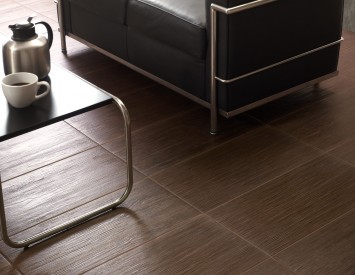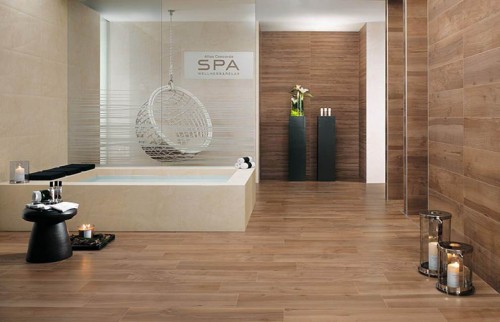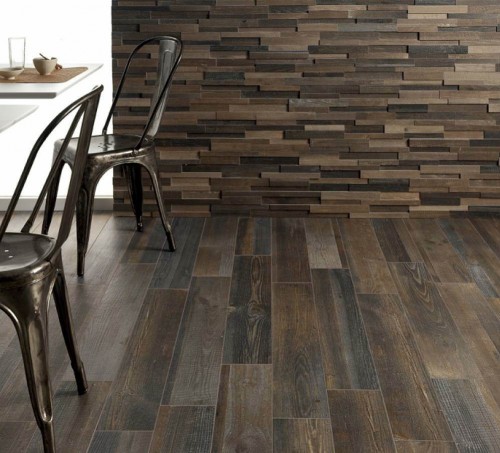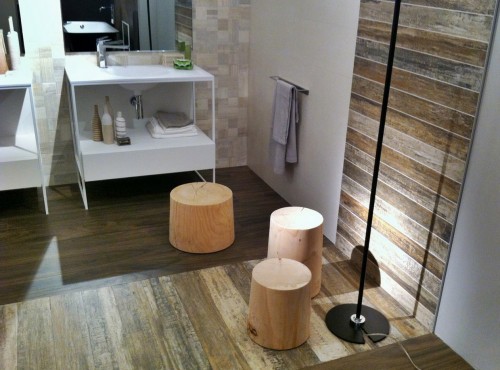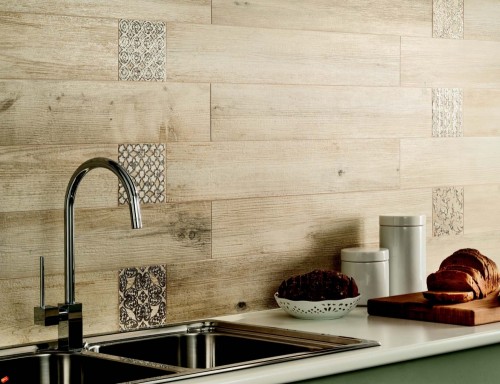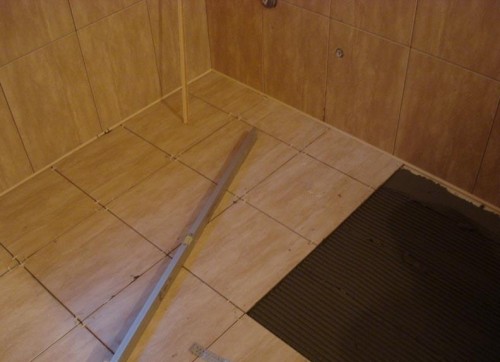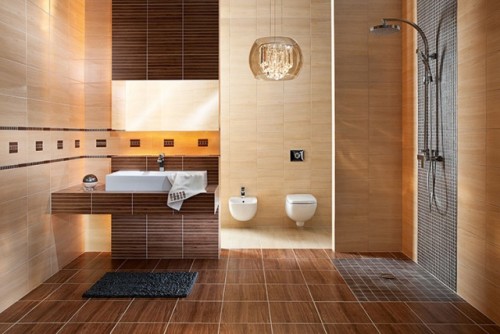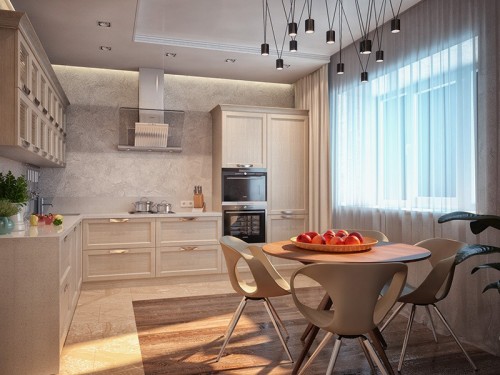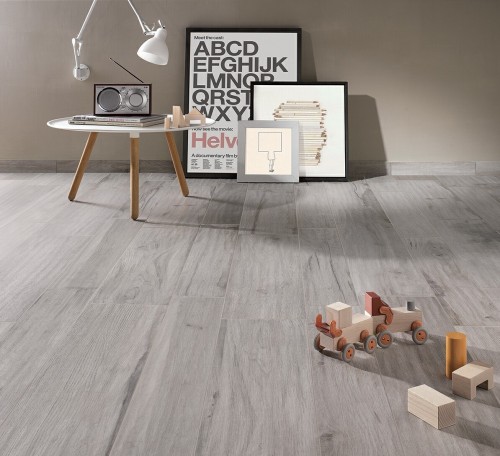A decent alternative to natural wood for flooring and walls is ceramic and ceramic border tiles for wood. It happens that due to some reasons, the installation of flooring from wood is impossible-for example, there are many visitors in the office per day, and the boards under the feet will quickly be worn out under the influence of dirt, moisture and loads. In this case, it is worth considering the use of tiles stylized under natural wood.
Content
Advantages of wood tiles
The tree is traditionally considered the most beautiful materials for decorating rooms. Imitation of natural wood is very popular among many types of flooring, as well as materials for wall decoration. The use of ceramic and porcelain tiles will allow you to combine the decorativeness of natural wood in the interior and the ease of tile care. In addition, the use of such materials allows you to maintain natural reserves of forest resources. Modern production technologies make it possible to make materials with various texture, embossing and pattern. Tiles for wood are widely used to design modern interiors, it is not too expensive. Tile floor is cheaper than wooden, as well as carpet and linoleum, does not fade and does not deform over time.
Traditionally, ceramic tiles were used in kitchens, in canteens and bathrooms, and recently there has been a tendency to finish hallway, halls, as well as attic and terraces, pools. Modern tiles under a tree on the floor have a number of advantages, among which:
- high aesthetics and decorativeness;
- environmental friendliness - this finishing material is natural in composition and not toxic;
- strength, wear resistance and durability;
- resistance to significant temperature changes;
- moisture resistance and low hygroscopicity - with proper laying, the floor covering of tiles will protect against the course and formation of mold and fungi;
- resistance to aggressive chemical effects;
- in case of mechanical damage, the tile is easy to replace;
- ease of care;
- a successful ratio of quality and price.
A wide selection of the textures and colors of tiles will make an imitation of a wooden floor or parquet, which can be distinguished from the traditional coating of wood, only walking on it with bare feet. Such materials will not be able to convey the heat inherent in the natural tree, but the operational characteristics of the tiles are much higher.
In addition, it is easily mounted, hygienic, easily washes, does not distinguish and does not absorb odors, quite strong, withstands significant weight loads - which means that it does not go under pressure from heavy furniture and household appliances. Such floors are not susceptible to decay, fireproof.
The disadvantages of floor tiles under wood include:
- in the bedrooms and children's rooms, the use of such a flooring can be irrational without the “warm floor” system - ceramic tiles are cold to the touch;
- the complexity of laying tiles is compared, for example, with linoleum;
- as a rule, the tile floor serves for a very long time without losses of functional qualities and its decorativeness - so it can have time to get bored.
Thanks to modern technologies, you can buy tiles under a tree that practically does not differ in its appearance from natural wood, various manufacturers.
Varieties and characteristics of tiles under wood
Depending on the production method, the following types of floor tiles are distinguished:
- ceramic;
- porcelain.
Both types are made of clay by firing. Ceramic tiles under a tree consists of two layers - bases and decorative enamel, modern production technologies allow you to create finishing materials that are not distinguishable from the wood surface of various textures and shades.
The difference between porcelain tiles is that it is made of pressed clay mass by firing at higher temperatures, as a result of which the ceramic mass acquires new properties. The material is sintering into a monolithic mass with very valuable characteristics comparable to the properties of natural stone. Tiles of porcelain tiles under the tree are characterized by increased strength, high moisture resistance and frost resistance, which gives new opportunities for design and design in various rooms.
Tile marking
When buying tiles under a tree, you should pay attention to the marking of the material:
- the wear resistance is indicated by “PEI” - the maximum value is equal to V (such tiles are used for public places with a large number of visitors). For decoration of the floor of residential premises, the use of materials with the value of this parameter III-IV is recommended;
- the coefficient of friction - its indicator is important for determining the degree of sliding of the tile. Tiles under a tree in the bathroom should have significant sheerness. The floor friction coefficient for the floor is indicated by the letter R, its maximum value is 13 (such tiles are characterized by increased safety in operation and can be used for industrial facilities, pool cladding). At home, floor tiles with a friction coefficient of 11-12 can be used;
- chemical resistance - materials with labeling “A” or “AA” are suitable - it is important for surfaces often processed with detergents and cleaning products.
Features of choice
Tiles under a tree can imitate aged wood, parquet, laminate, boards of various formats and shades.
For the floor and walls of the bathroom, it is recommended to choose a tile that differs in high moisture resistance, non -slip surface and matte shades. Tiles for the kitchen under the tree, given the specifics of the room, should differ in wear resistance and resistance to chemical influences, as well as a finely porous surface structure, so that it is easier to wash from kitchen pollution. In the kitchen interior, you can finish with tiles under the tree part of the walls - the working area, creating the effect of wooden panels. Such a finish will give the kitchen an atmosphere of comfort and comfort. For wall cladding, tiles with a lower strength indicator are suitable than flooring, respectively, its price will be significantly lower.
Tiles with a matte surface in various interiors differs a number of advantages, since it is more practical than glossy, characterized by lower sliding indicators, traces of mechanical damage and scratches are not so noticeable on it.
When selecting shades of tiles under a tree, the following nuances should be taken into account:
- for decoration of residential premises, it is recommended to select tiles under a tree combined with furniture, it is also allowed to use contrast tones - for example, a combination of dark and bleached wood looks spectacular;
- for small rooms, it is advised to choose a tile of light warm shades with an implicitly expressed relief - such a decoration will visually increase the space;
- in large and spacious rooms, it is recommended to use juicy saturated tones of tiles.
Laying tile imitating wood
Work on the decoration of ceramic and porcelain tiles do not differ in particular complexity, but they require careful planning and scrupulousness. To achieve the best aesthetic effect, you need to strive for seamless technology for laying ceramic sex in order to achieve maximum imperceptibility of seams. This can be achieved by selection and laying out patterns of tiles with smooth transitions (especially relevant for clearly expressed relief patterns, as well as trimmed tiles), the use of the thinnest distance crosses, as well as a suture grout close in shade.
To lay the tile imitating wood, some experience of such work is required, but if desired, such installation can be performed independently. A wide range of tiles imitating a variety of wood species is presented on sale, including exotic all kinds of colors, using which in the interior you can achieve amazing effects when it is difficult to believe that you are not wooden panels and floors.
